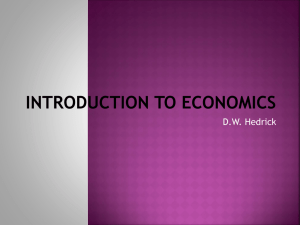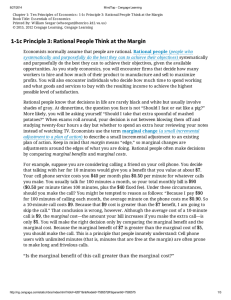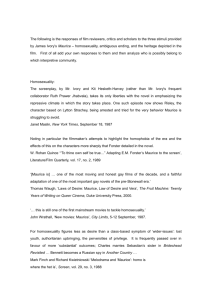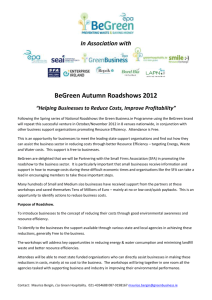Practice Q's
advertisement
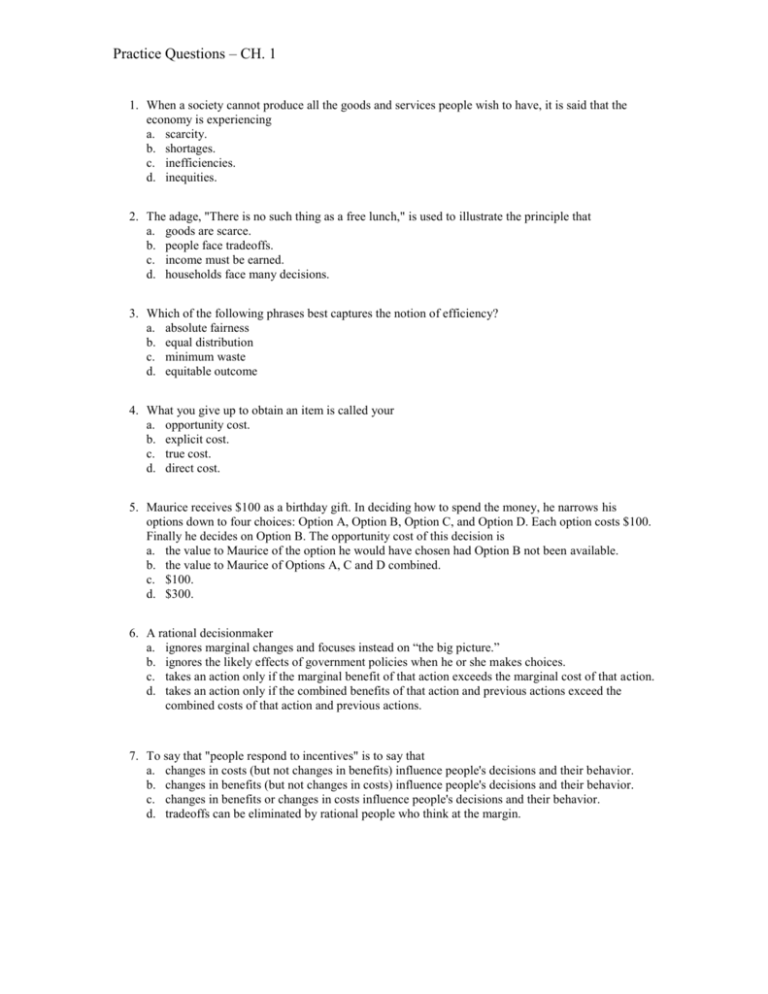
Practice Questions – CH. 1 1. When a society cannot produce all the goods and services people wish to have, it is said that the economy is experiencing a. scarcity. b. shortages. c. inefficiencies. d. inequities. 2. The adage, "There is no such thing as a free lunch," is used to illustrate the principle that a. goods are scarce. b. people face tradeoffs. c. income must be earned. d. households face many decisions. 3. Which of the following phrases best captures the notion of efficiency? a. absolute fairness b. equal distribution c. minimum waste d. equitable outcome 4. What you give up to obtain an item is called your a. opportunity cost. b. explicit cost. c. true cost. d. direct cost. 5. Maurice receives $100 as a birthday gift. In deciding how to spend the money, he narrows his options down to four choices: Option A, Option B, Option C, and Option D. Each option costs $100. Finally he decides on Option B. The opportunity cost of this decision is a. the value to Maurice of the option he would have chosen had Option B not been available. b. the value to Maurice of Options A, C and D combined. c. $100. d. $300. 6. A rational decisionmaker a. ignores marginal changes and focuses instead on “the big picture.” b. ignores the likely effects of government policies when he or she makes choices. c. takes an action only if the marginal benefit of that action exceeds the marginal cost of that action. d. takes an action only if the combined benefits of that action and previous actions exceed the combined costs of that action and previous actions. 7. To say that "people respond to incentives" is to say that a. changes in costs (but not changes in benefits) influence people's decisions and their behavior. b. changes in benefits (but not changes in costs) influence people's decisions and their behavior. c. changes in benefits or changes in costs influence people's decisions and their behavior. d. tradeoffs can be eliminated by rational people who think at the margin. Practice Questions – CH. 1 8. A construction company has built 50 houses so far this year at a total cost to the company of $8 million. If the company builds a 51st house, its total cost will increase to $8.18 million. Which of the following statements is correct? a. For the first 50 houses, the average cost per house was $160,000. b. The marginal cost of the 51st house, if it is built, will be $180,000. c. If the company can experience a marginal benefit of $190,000 by building the 51 st house, then the company should build it. d. All of the above are correct. 9. If the United States decides to trade with Mexico, we know that a. Mexico will benefit, but trade with a less developed country could not benefit the United States. b. it will not benefit Mexico because workers in the United States are more productive. c. Mexico and the United States can both benefit. d. it will not benefit either country because their cultural differences are too vast. 10. A friend of yours asks you why market prices are better than government-determined prices. Because you understand economic principles, you say that market-determined prices are better because they generally reflect a. the value of a good to society, but not the cost of making it. b. the cost of making a good to society, but not its value. c. both the value of a good to society and the cost of making it. d. neither the value of a good to society nor the cost of making it. 11. A rationale for government involvement in a market economy is as follows: a. Markets sometimes fail to produce a fair distribution of economic well-being. b. Markets sometimes fail to produce an efficient allocation of resources. c. Property rights have to be enforced. d. All of the above are correct. ANSWERS: 1=A, 2=B, 3=C, 4=A, 5=A, 6=C, 7=C, 8=D, 9=C, 10=C, 11=D




